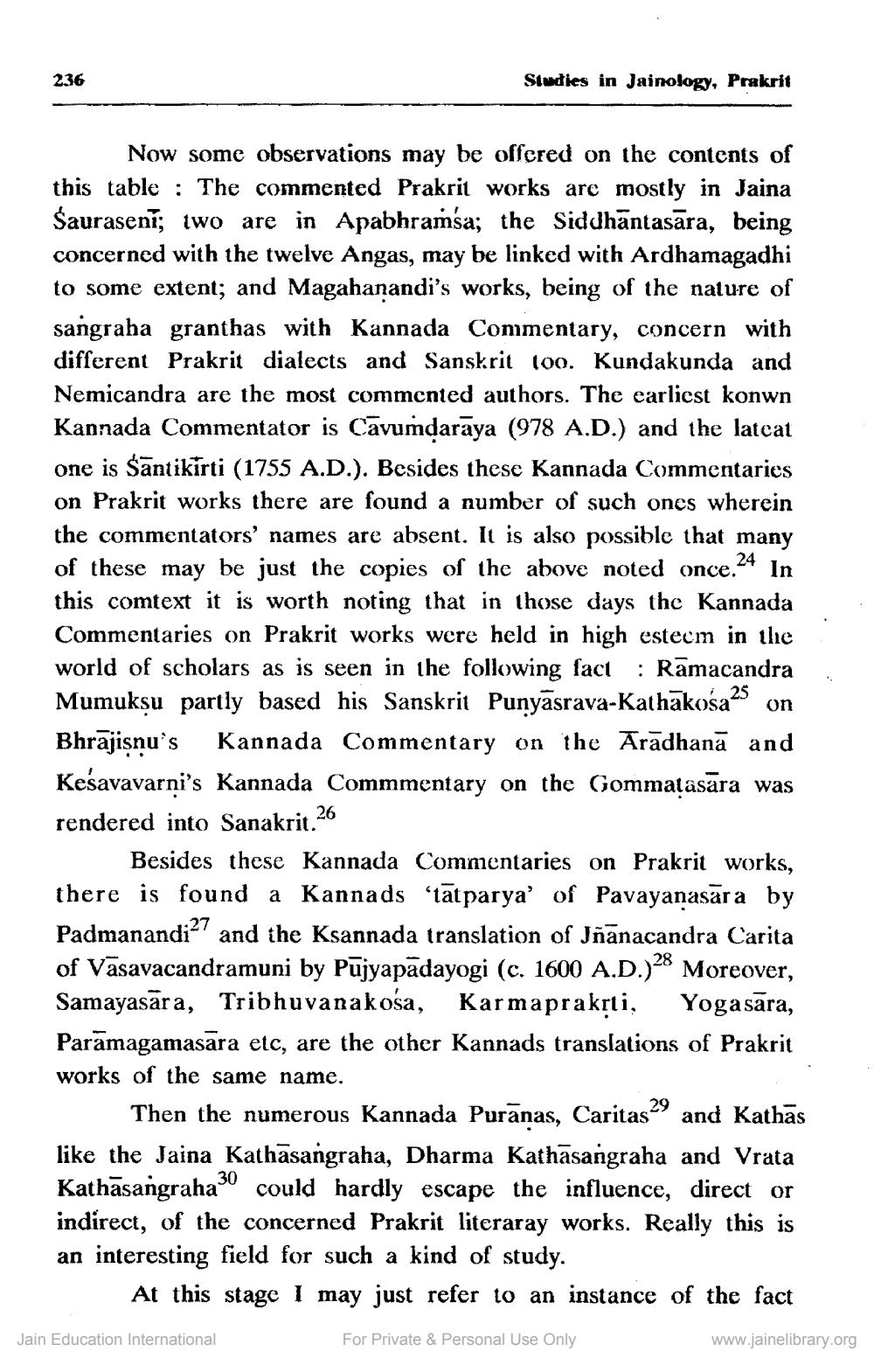________________
236
Studies in Jainology, Prakrit
Now some observations may be offered on the contents of this table : The commented Prakrit works are mostly in Jaina Śaurasení; two are in Apabhramsa; the Siddhāntasāra, being concerned with the twelve Angas, may be linked with Ardhamagadhi to some extent; and Magahanandi's works, being of the nature of sangraha granthas with Kannada Conmentary, concern with different Prakrit dialects and Sanskrit too. Kundakunda and Nemicandra are the most commented authors. The earlicst konwn Kannada Commentator is Cāvumdaraya (978 A.D.) and the latcat one is Sāntikirti (1755 A.D.). Besides these Kannada Commentaries on Prakrit works there are found a number of such ones wherein the commentators' names are absent. It is also possible that many of these may be just the copies of the above noted once.24 In this comtext it is worth noting that in those days the Kannada Commentaries on Prakrit works were held in high esteem in the world of scholars as is seen in the following fact : Rāmacandra Mumuksu partly based his Sanskrit Punyasrava-Kathakośa25 on Bhrajisnu's Kannada Commentary on the Aradhanā and Kesavavarni's Kannada Commmentary on the Gommalasāra was rendered into Sanakrit.26
Besides these Kannada Commentaries on Prakrit works, there is found a Kannads ‘tātparya' of Pavayanasāra by Padmanandi27 and the Ksannada translation of Jñānacandra Carita of Vāsavacandramuni by Pūjyapādayogi (c. 1600 A.D.)28 Moreover, Samayasara, Tribhuvanakosa, Karmaprakrti, Yoga sāra, Parāmagamasāra etc, are the other Kannads translations of Prakrit works of the same name.
Then the numerous Kannada Puranas, Caritas 29 and Kathās like the Jaina Kathāsangraha, Dharma Kathāsangraha and Vrata Kathāsangraha30 could hardly escape the influence, direct or indirect, of the concerned Prakrit literaray works. Really this is an interesting field for such a kind of study.
At this stage I may just refer to an instance of the fact
Jain Education International
For Private & Personal Use Only
www.jainelibrary.org




